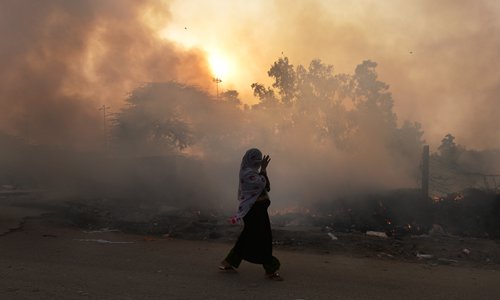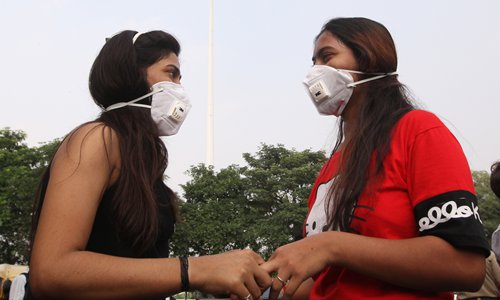HOME >> WORLD
Rise in stubble burning in north India adds to Delhi's air pollution woes
Source:Xinhua Published: 2019/10/22 14:19:15

Photo: VCG
Burning of farm residues in India's two northern states - Punjab and Haryana, has doubled over the past two days, thereby leading to a rise in air pollution levels in Delhi and surrounding areas.
The air quality in the Indian capital deteriorated to the "poor" level on Monday, even as the Air Quality Index (AQI) plummeted to 249.
According to the set standards, the AQI between the range of 51 to 100 is considered as "Satisfactory", 101-200 is "Moderate", 201-300 falls under the category of "Poor". While 300-400 is considered as "Very Poor," levels between 401-500 fall under the "Hazardous" category.
The US National Aeronautics and Space Administration (NASA)'s satellite "VIIRS" reportedly located 1,031 fire counts in the two states on Monday.
Indicating a dangerous trend ahead of grand festival of Diwali on Oct. 27, which sees a large number of polluting crackers being burst in celebrations, nearly half of all fires recorded in the two states in October have been taken place in the past three days.

Photo: VCG
According to the NASA data, there has been a 9-percent rise in the number of such incidents over the past two days.
It further revealed that the frequency of fires so far this year has largely been the same as last year and if the pattern continued, the peak stubble-burning season could begin just after the Diwali festival, reported English daily 'The Times of India' on Tuesday.
Meanwhile, the Indian government-run pollution monitoring and research body - the "System of Air Quality and Weather Forecasting (SAFAR)", said that the contribution of pollutants from stubble burning in Delhi's air quality has been rising over the past few days and stood at 12 percent on Monday.
The Delhi Government is leaving no stone unturned in curbing the menace, like checking garbage burning in the open and also illegal constructions or demolitions of buildings leaving huge amount of dust in the air.
Posted in: CENTRAL & SOUTH ASIA